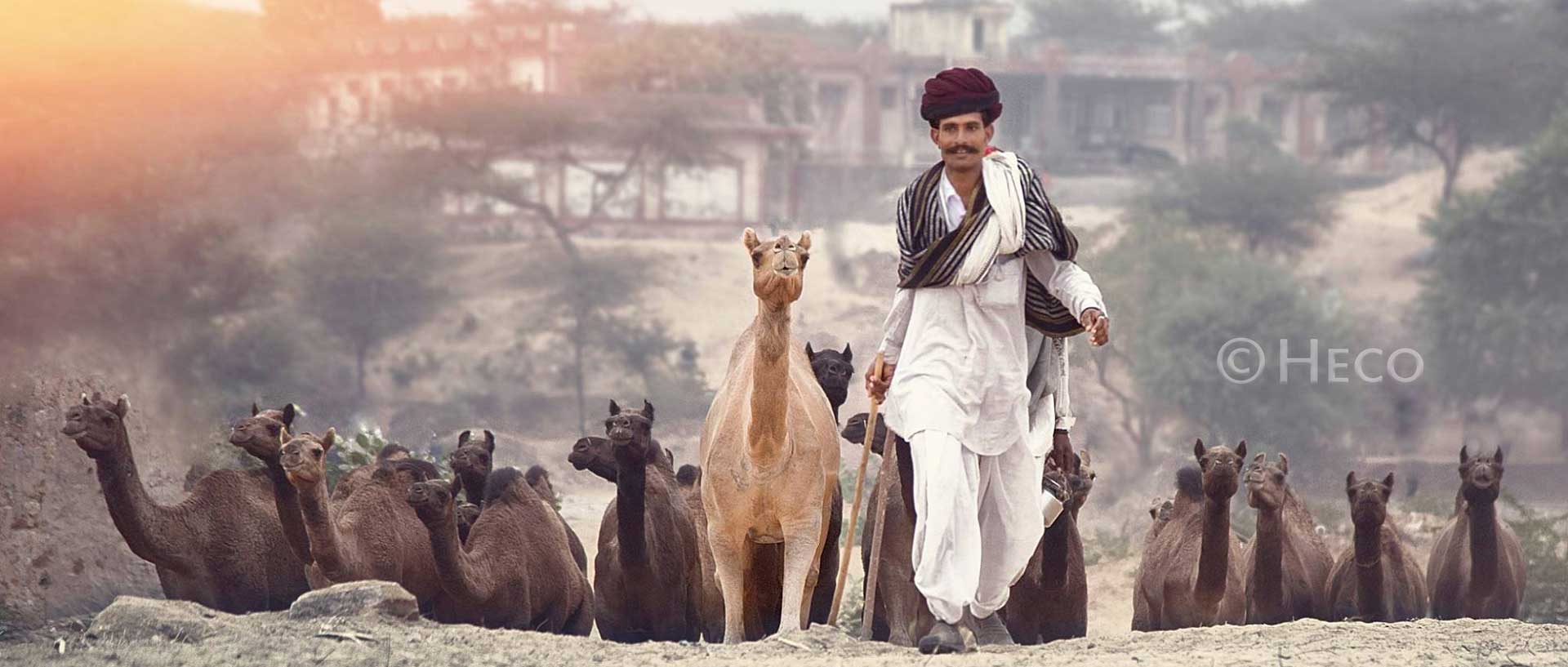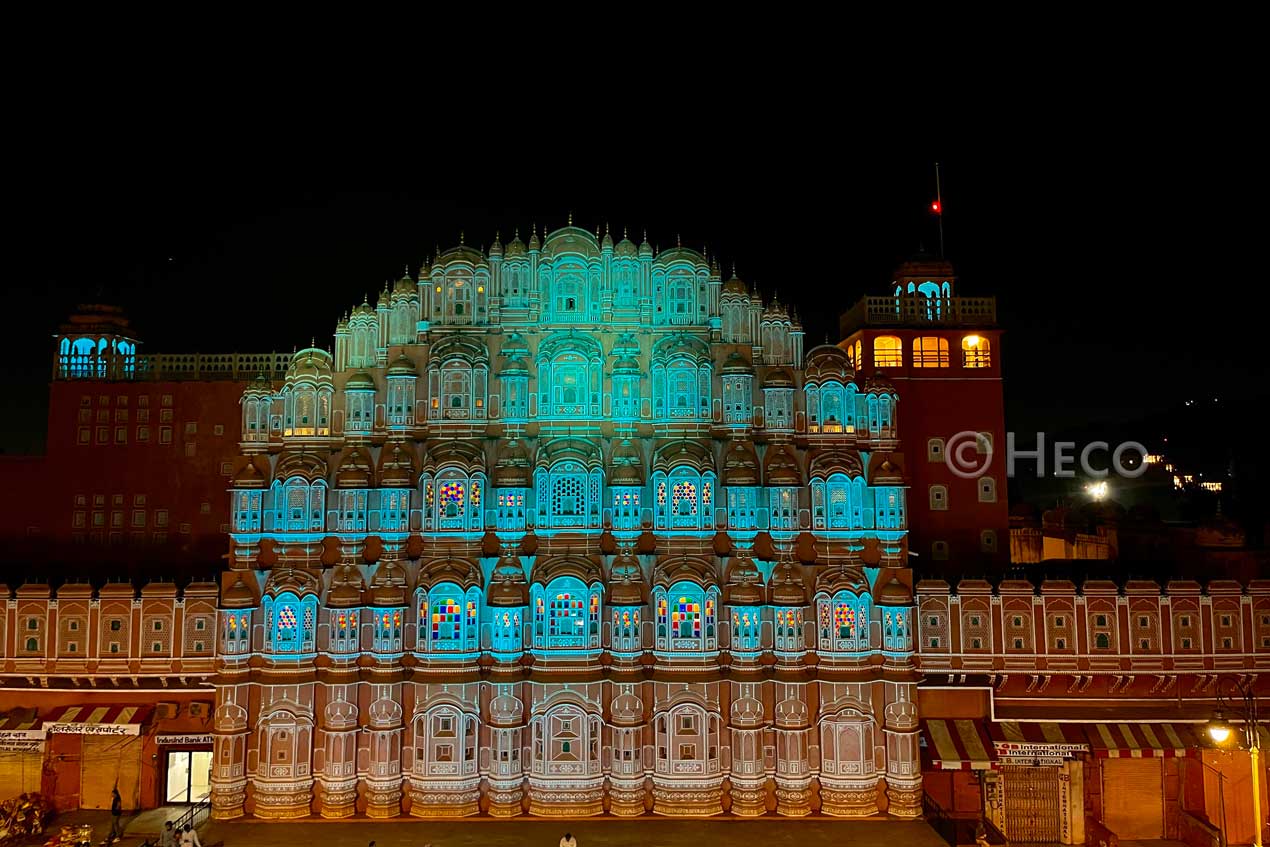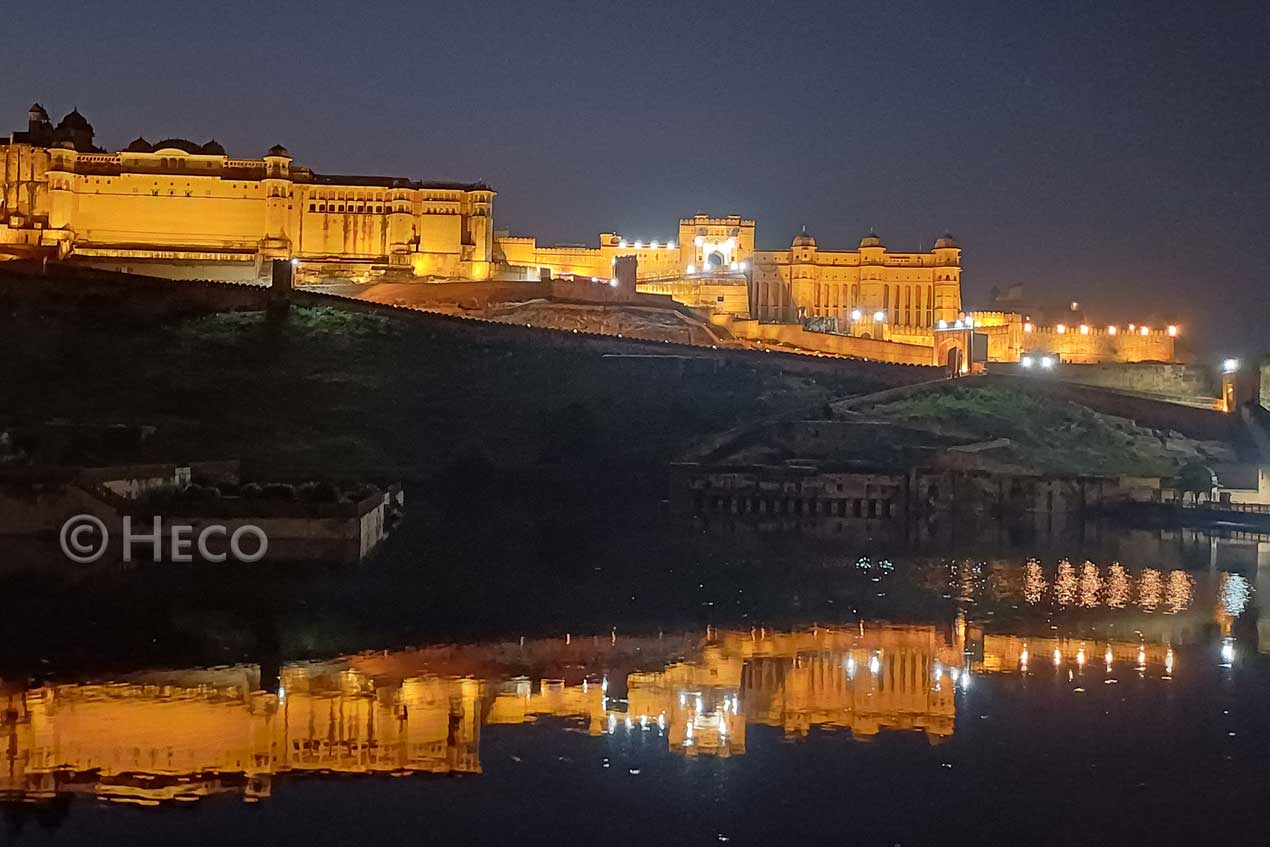Rajasthan

Rajasthan Tour
इतिहास के पन्ने
Itihas ke Panne – translates to pages of history. On the pages of history, a picture of Rajasthan is sketched, a picture that stands tall amidst the flow of time, where the past and present converge.
Rajasthan, a state in India, takes you on a journey through time with its historic forts, grand palaces, and vast deserts. The culture, art, and architecture here will transport you to a world that will leave you spellbound. Historical sites like Jaisalmer’s Sonar Fort, Jodhpur’s Mehrangarh Fort, Udaipur’s City Palace, and Jaipur’s Amer Fort give you a glimpse of Rajasthan’s grandeur and majesty.
Vibrant markets in Rajasthan showcase colorful handicrafts, carpets, and jewelry. The music, dance, and literature here offer a deep dive into Rajasthani culture. Traveling to Rajasthan is an experience that will stay with you forever. So come, embark on this historical and cultural journey through Rajasthan and witness its grandeur with your own eyes.
Rajasthan, renowned for its Royal Heritage Tours, boasts an intricate rock structure, comprising the Bundelkhand Gneiss, which forms the foundation of its majestic Fort Palaces. The ancient Aravalli mountain ranges, older than the Himalayas, offer breathtaking vistas and unparalleled opportunities for Desert Safari and Wildlife Tourism.
Visit Sawai Madhopur for a thrilling Tiger Trek and discover the ancient rock formations. Or for a less crowded destination and wild trail, visit Jawai for a Leopard safari. Uncover the secrets of Mewar, also known as Pragvat, and explore the Lunakshah-founded sect of Jains. Experience the vibrant Rajasthani Culture and indulge in heritage walks through the historic cities of Jaipur, Udaipur, and Jodhpur. As you wander through these cities, marvel at the impressive architectural heritage and immerse yourself in the rich folk music and dance traditions of Rajasthan.
Heritage Tours Rajasthan
Rajasthan is known as the land of rajas and maharajas for its grandeur. With its rich historical heritage, this Indian state is a terrain mapped with history, boasting 19 princely states and two chiefdoms that merged to form the Rajasthan we know today. We have listed some of the grand architectural marvels in Rajasthan below –
Ajmer Fort
Believed to have been built in the reign of Ajaypal Chauhan in 1354 AD. Ajmer Fort, also known as Taragarh fort, stands out for its greenish serpentine stone construction. It’s one of the few forts untouched by Mughal styles. This makes Taragarh a valuable example of Rajput design with its imposing walls and intricate gateways showcasing the military prowess of the Chauhan dynasty.
Mehrangarh Fort
The construction of Mehrangarh Fort was started by Rao Jodha who reigned from 1438-89. The fort boasts an impressive architecture with 120-feet-high and 70-feet-thick walls, and stunning views of Jodhpur, reflecting the strategic vision of the Rathore rulers. Mehrangarh [fort of the sun] has been home to the Rathore family for over 500 years. Maharaja Gaj Singh II is the current head of the family and takes care of the fort. He has preserved the buildings and created a museum to show the history of his ancestors.
City Palace Jaipur
The City Palace in Jaipur covers many courtyards. Maharaja Sawai Jai Singh II started building it in 1727. His successors added to the palace, making it more beautiful, until the 20th century. Mubarak Mahal, Chandra Mahal and Pritam Niwas Chowk are prominent features within the Jaipur City Palace
Umaid Bhawan Palace
One of the world’s largest private residences. A part of the palace, managed by Taj Hotels, offers luxury accommodations. On November 18, 1929, Maharaja Umaid Singh laid the cornerstone for Umaid Bhawan Palace, marking the beginning of an extraordinary architectural journey. Over the next 14 years, the palace took shape, its grandeur unfolding until its majestic completion in 1943.
Jal Mahal
In 1699, Maharaja Madho Singh I envisioned Jal Mahal not as a palace, but as a cozy hunting lodge for himself and his entourage during their duck hunting excursions. Nestled serenely within Man Sagar Lake, Jal Mahal stands as a testament to Jaipur’s rich architectural heritage. The palace was meticulously renovated and expanded by Maharaja Jai Singh II of Amber in the early 18th century.
Hawa Mahal
Built by Maharaja Sawai Pratap Singh in 1799 AD, it is a masterpiece of Rajput architecture, featuring a unique five-storey facade with 953 intricately carved jali windows, designed to resemble the crown of Lord Krishna. The clever design allowed royal women, bound by the conventions of “pardah,” to discreetly witness public festivities and processions, remaining hidden from view and maintaining their secluded status
Junagarh Fort
The Bikaner Fort was originally called Chintamani and later renamed as Junagarh in the 20th century. Not to be confused with the Junagadh in Gujarat. Built by Raja Rai Singh in 1588-1593 AD, it showcases a blend of Rajput and Mughal architectural styles, featuring intricately carved temples, palaces, and courtyards, reflecting the cultural richness of the Bikaner kingdom. Junagarh Palace boasts an expansive array of rooms, as each successive king commissioned his own distinct quarters, preferring not to inhabit those of his predecessors. These regal structures rivaled the grandeur of Louis’s France and Imperial Russia
City Palace Udaipur
This is one architectural marvel you should not miss at all. Why ? For perspectives and stories ! This monumental structure was built over 400 years, beginning in 1553 when Maharana Udai Singh II of the Sisodia Rajput family initiated its construction. Multiple rulers from the Mewar dynasty contributed to its development over the centuries. It is a majestic complex of palaces, gardens, and museums, featuring the stunning Amar Vilas, Badi Mahal, and Jagadish Temple.
Chittorgarh Fort
A UNESCO World Heritage Site, it is one of India’s largest and most impressive forts, sprawling across a 180-meter-high hill in the city of Chittorgarh. This majestic structure was once the capital of Mewar and boasts an incredible array of historic architecture, including four palaces, 19 large temples, 20 water bodies, and four memorials, as well as several victory towers.
Perched atop a hill, the fort covers an expansive area of 280 hectares, overlooking the breathtaking valley below, which is drained by the Berach River.
Why choose HECO for your Rajasthan Tour
At HECO, we believe that travel is not just about sightseeing, but about soul-seeking. Our expertly curated tours delve into the heart of India’s cultural heritage, guiding you through ancient monuments, vibrant markets, and off-the-beaten-path destinations.
We can also provide the perfect customized tour that is a combination of Rajasthan and the Himalayas. You can enjoy both the rich heritage and the environmental beauty of India.
By choosing HECO, you’re not only enriching your own life, but also:
- Supporting local communities and women entrepreneurs
- Contributing to environmental conservation efforts
Imagine a journey that weaves together the threads of India’s tumultuous past, its vibrant present, and the timeless essence of its soul.
On this captivating journey, you’ll delve into the intricate layers of India’s cultural narrative, navigating bustling bazaars and sampling the rich flavors of regional cuisine.
Join the HECO community and experience India with a purpose. Let’s journey together, leaving a positive impact and unforgettable memories in our wake.
Offbeat Rajasthan Heritage Tour
Escape the well-worn tourist trails and delve into the authentic heart of Rajasthan with our unique, offbeat tour. We go beyond the majestic forts and opulent palaces, revealing the hidden gems that pulse with the true spirit of this vibrant land.
Imagine exploring ancient villages where time stands still, encountering local artisans preserving age-old crafts, and witnessing breathtaking landscapes far from the crowds. Our tours are designed to immerse you in the region’s rich cultural tapestry, offering intimate experiences that connect you with the soul of Rajasthan. We’ll guide you through:
- Hidden hamlets: experience the traditional Rajasthani lifestyle.
- Local craft encounters: Engage with the artist, and see the traditional art being made.
- Secluded natural beauty: Discover the peaceful side of the desert landscape.
This isn’t just a tour; it’s an adventure into the authentic Rajasthan, a journey that will leave you with lasting memories and a deeper understanding of this captivating region.
Check this link for an offbeat Rajasthan tour. This itinerary is just a glimpse to help you picture your trip. Based on your interests and the number of days you have, we will customize your tour.
The Golden Triangle Tour
If you are short on time or need to cover different destinations within India, you may want to check out our 6/7 days Golden Triangle Tour
The iconic Golden Triangle Tour weaves together three vibrant cities – Delhi, Agra, and Jaipur. From the imperial majesty of Delhi’s Mughal-era monuments to the ethereal beauty of Agra’s Taj Mahal, and the regal grandeur of Jaipur’s Rajasthan palaces, every moment reveals a new facet of India’s timeless allure. Over 6/7 mesmerizing days, unravel the secrets of the past, revel in the beauty of the present, and create memories that will be treasured forever.
To read more details about the Golden Triangle Tour visit this page.
Your Golden Triangle Tour can be clubbed with a trek in the Himalayas. This link will help you with the different treks that we offer in the UNESCO World Heritage Site of Great Himalayan National Park
Best Time to visit Rajasthan
The best time to visit Rajasthan or take the Golden Triangle Tour is from November to February. For the rest of the year the temperatures soar in the range of 40 – 45 degree Celsius. The sun is extremely harsh in the state and with climate change, the temperature gets unbearable in summer months starting April onwards. Travelers coming from cold regions should properly plan their holiday to avoid an unpleasant experience because of the hot temperatures.
For those travelers who want to experience destinations in the off season to beat the crowd, Rajasthan is definitely not the place to experiment this.
The ‘You may Go’ recommendation in October and March has to be considered carefully. It is still hot, around 34 degree Celsius and try to restrict day tours for early mornings and late evenings during these 2 months
JAN
PLEASANT
Best time to go
FEB
PLEASANT
Best time to go
MAR
HOT
You may go
APR
VERY HOT
Avoid
MAY
VERY HOT
Avoid
JUN
VERY HOT
Avoid
JUL
VERY HOT
Avoid
AUG
VERY HOT
Avoid
SEP
VERY HOT
Avoid
OCT
HOT
You may go
NOV
PLEASANT
Best time to go
DEC
PLEASANT
Best time to go







